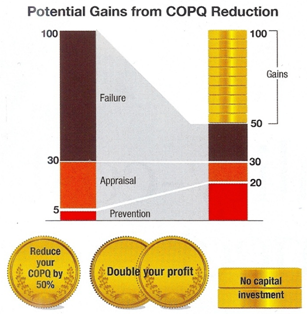Multinational banks are known to invest in excellent infrastructure and executives. The lowest designation for a new campus recruit two decades ago, in India, was nothing less than Vice President. Salaries matched the designation. The self esteem of these freshly recruited students was always at a zenith. They were the prize catch for the most popular campus recruiters-multinational banks.
I was invited by a multinational bank in South Mumbai, the financial capital of India, to experience excellence. An autopsy of sorts. Yes, this branch of the bank had marble flooring, piped music, art that only a successful bank could afford personal computers at every desk, and more. Perfect.
The head of the branch took me around to meet with several of his executives. I will focus on one 200 square feet section that was partitioned with a three feet high wall. This section seated four executives, in the four corners, facing the partition wall. All four in pin striped suits. Each of the four was very busy working on his dedicated personal computer.
I asked: "What is the activity of this section?"
Branch head: "They print the monthly statements of account holders."
The qualitist in me: "Oh, they manufacture monthly statements."
Branch head: ???
More of the qualitist: "What is the failure rate for these monthly statements?"
Branch head: "Can't you see .. it's all computerized! !"
Yet more of the qualitist: "Oh. I see. Do any customers come back for reconciliation?"
"Hardly any."
"How many?" "Perhaps one in 200."
"Ah ha. That's 0.5% failure rate."
"So what's the cost of failure?"
"Minimal."
"Let's find out".
The branch head and I invested a half-day finding out what work the four executives actually did. As it turned out, one needed the equivalent of two persons to do 99.5% of the work right the first time and the equivalent of another two to correct 0.5 % failures!
So what is the cost of poor quality (CO PQ) of this section? It's 50% of the budget for that department plus the equivalent of marble flooring, piped music, and art.
The bank heard the alarm. They commenced their pilot projects by working on COPQ for the auto loan process in South India.
 Lessons Learned
Lessons Learned
- COPQ is alive and well in every service process
- A low failure rate can disguise a high COPQ
- COPQ is an opportunity
- Problems for pilot projects should have high visibility
- Quality has two arms: product/ service features and freedom from deficiencies
This fable aims to demystify the concept of COPQ and how it affects our balance sheets everyday! The costs associated with poor quality are due to both sporadic and chronic quality problems. These costs together are referred to as COPQ. The COPQ in any organisation is approximately 30% of total costs. Consequently, the proposition is: halve your COPQ and double your profit (without capital investment).
A sporadic problem is a sudden, adverse change in the status quo, which requires remedy through restoring the status quo. Firefighting.
A chronic problem is a long standing adverse situation, which requires remedy through changing the status quo. Fire prevention.
The skills required for fire prevention are distinctly different to those required for fire fighting. Likewise, the skills required for solving chronic problems are distinctly different to those required for solving sporadic problems.
Do managers have the skills to solve chronic problems?
CREDITS: Suresh Lulla, Founder & Mentor, Qimpro Consultants Pvt. Ltd.